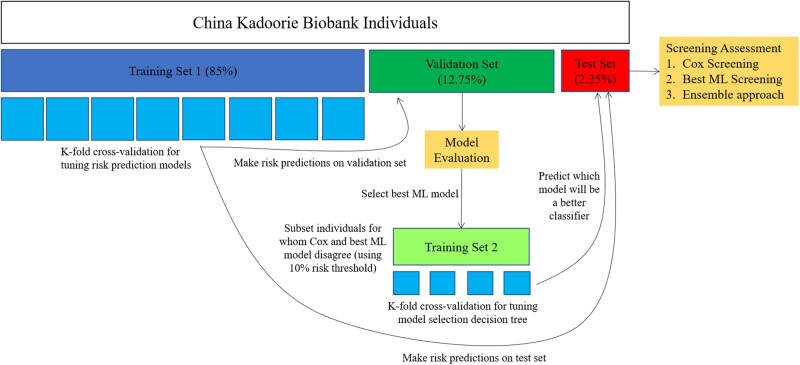Figure 1.
Cox and machine learning (ML) model development and validation. All analyses were performed separately for men and women. Included individuals were divided into a training set (85%), validation set (12.75%), and test set (2.25%). Risk prediction models were developed in the training set and assessed in the validation set, with a best ML model selected. The traditional Cox model and best ML model were then used for screening high-risk individuals in the validation set using a 10% predicted risk threshold. A second training set was created from a subset of the validation set wherein the Cox model and best ML model disagreed on risk classification, and a decision tree was trained to predict which model would yield a better risk classification for each individual. Screening approaches, including a (i) Cox-only approach, (ii) best ML-only approach, and (iii) an ensemble approach, were assessed and compared using the held-out test set.

